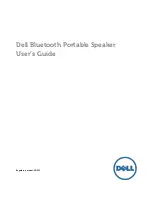
200950 - 2500W PORTAbLE INvERTER GENERATOR
OPERATION
19
NOTICE
For gasoline restarts with hot engine in hot ambient >
86°F (30°C):
If generator does not start after the first pull,
press the choke knob in to the “RUN” position for the next
3 pulls. Too much choke leads to spark plug fouling/engine
flooding due to the lack of incoming air. This will cause the
engine not to start.
NOTICE
For gasoline starting in cold ambient < 59°F (15°C):
The
choke must be in 100% of the “CHOKE” position for manual
start procedures. Do not over-choke. As soon as engine starts,
push the choke knob in the “RUN” position.
NOTICE
If the engine starts but does not continue to run make certain
that the generator is on a flat, level surface. The engine is
equipped with a low oil sensor that will prevent the engine
from running when the oil level falls below a critical threshold.
Connecting Electrical Loads
Let the engine stabilize and warm up for a few minutes after
starting.
Plug in and turn on the desired 120 or 240 (if applicable) Volt AC
single phase, 60 Hz electrical loads.
–
DO NOT connect 3-phase loads to the generator.
–
DO NOT overload the generator.
WARNING
Always remember to plug your appliances directly into the
generator and do not plug the generator power cord into any
electrical outlet or connect to the circuit breaker panel in your
home. Connecting a generator to your home’s electric utility
company’s power lines, or to another power source, called
‘backfeeding’ is a dangerous practice that is illegal in many
states and municipalities.
This action if done incorrectly could damage your generator,
appliances and could cause serious injury or death to you
or a utility worker when attempting to restore power during
an outage occurrence in the neighborhood who may then
unexpectedly encounter high voltage on the utility line and
suffer a fatal shock.
Whether injuries occur or not, if installed incorrectly and not to
applicable laws and codes, you may be subject to fines or the
utility company may disconnect your home power should this
practice be found in your home.
If the generator will be connected to a building electrical
system, these connections must isolate the generator power
from the utility power. You are responsible for ensuring your
generator’s electricity does not backfeed into the electric
utility power lines. These connections must comply with all
applicable laws and codes – Consult your local utility company
or a qualified electrician to properly install this connection.
Do Not Overload Generator
Capacity
Follow these simple steps to calculate the running and starting
watts necessary for your purposes:
1. Select the electrical devices you plan on running at the same
time.
2. Total the running watts of these items. This is the amount of
power you need to keep your items running.
3. Identify the highest starting wattage of all devices identified
in step 1. Add this number to the number calculated in step 2.
Starting wattage is the surge of power needed to start some
electric driven equipment. Following the steps listed under
“Power Management” will guarantee that only one device will
be starting at a time.
















































